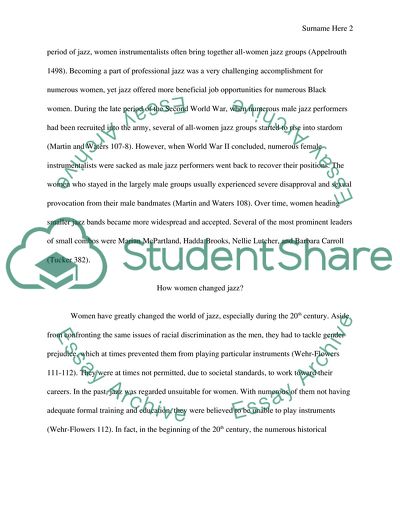Cite this document
(Women in Jazz Music Coursework Example | Topics and Well Written Essays - 1500 words, n.d.)
Women in Jazz Music Coursework Example | Topics and Well Written Essays - 1500 words. https://studentshare.org/music/1876856-women-in-jazz-music
Women in Jazz Music Coursework Example | Topics and Well Written Essays - 1500 words. https://studentshare.org/music/1876856-women-in-jazz-music
(Women in Jazz Music Coursework Example | Topics and Well Written Essays - 1500 Words)
Women in Jazz Music Coursework Example | Topics and Well Written Essays - 1500 Words. https://studentshare.org/music/1876856-women-in-jazz-music.
Women in Jazz Music Coursework Example | Topics and Well Written Essays - 1500 Words. https://studentshare.org/music/1876856-women-in-jazz-music.
“Women in Jazz Music Coursework Example | Topics and Well Written Essays - 1500 Words”. https://studentshare.org/music/1876856-women-in-jazz-music.


